Neosporin® is a staple in many human first-aid kits, renowned for its effectiveness in treating minor cuts and scrapes. As a cat owner, you might be tempted to reach for this familiar ointment when your feline friend has a wound. However, using Neosporin on cats is not as straightforward as it is for humans. While it’s readily available over the counter, and you might have used it yourself without issues, applying Neosporin to your cat could pose certain risks.
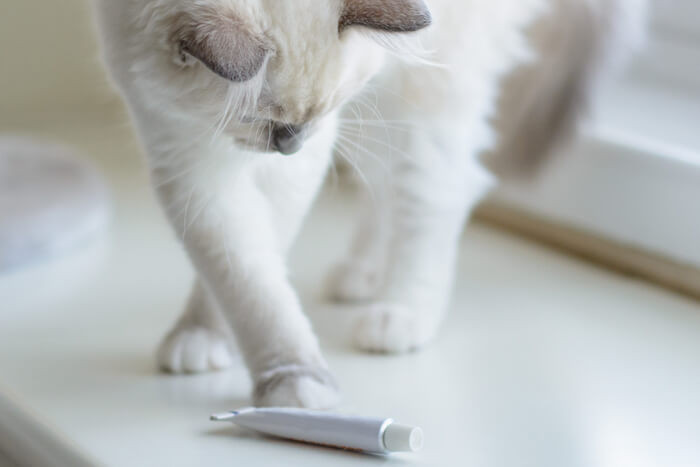 Neosporin on Cat Wound Care
Neosporin on Cat Wound Care
This article will delve into the use of Neosporin For Cats, exploring its components, potential dangers, and safer alternatives for treating your cat’s injuries. As responsible pet owners, understanding the nuances of feline health and medication is crucial to ensure the well-being of our beloved companions.
Understanding Neosporin and Its Components
Neosporin is a topical antibiotic ointment primarily used to prevent bacterial infections in minor wounds. Often recognized as a “triple antibiotic ointment,” its classic formulation combines three active antibiotic ingredients:
- Bacitracin: This antibiotic prevents the growth of bacteria by interfering with their ability to build cell walls.
- Neomycin: An aminoglycoside antibiotic, neomycin works by disrupting bacterial protein synthesis, effectively killing susceptible bacteria.
- Polymyxin B: This antibiotic increases bacterial cell membrane permeability, leading to cell death.
Some Neosporin formulations also include Pramoxine, an analgesic, to provide pain relief in addition to infection prevention. However, pain relief formulas are generally not recommended for cats due to potential sensitivities to this ingredient.
Neosporin is available in ointment and cream forms and is easily accessible without a prescription. While it’s not FDA-approved specifically for animals, it’s commonly used in human medicine for minor cuts, scrapes, and burns. It’s crucial to understand that while it’s considered safe for humans in most cases, cats can react differently to these medications.
The Risks of Using Neosporin on Cats
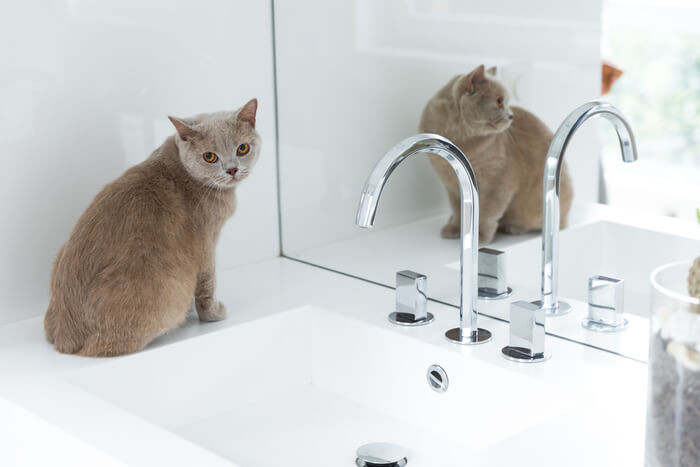 Neosporin Dangers for Felines
Neosporin Dangers for Felines
While Neosporin is designed to be safe for human use, there are specific concerns when it comes to cats. The primary issue isn’t necessarily the topical application itself, but rather a cat’s natural grooming behavior. Cats are meticulous groomers, and anything applied to their skin or fur is likely to be ingested during their self-cleaning process. This ingestion of Neosporin can lead to several complications in cats.
Potential Allergic Reactions: Cats can develop allergic reactions to one or more of the antibiotic components in Neosporin, particularly neomycin and polymyxin B. Allergic reactions can manifest as skin irritation even with topical application, but become more severe when ingested.
Gastrointestinal Upset: Ingesting Neosporin can cause mild to moderate gastrointestinal issues in cats. This can include symptoms like vomiting and diarrhea. While some cats might only experience a brief episode of upset stomach, others can have more prolonged and severe reactions.
Severe Allergic Reactions (Anaphylaxis): In a small percentage of cats, ingesting Neosporin can trigger a severe, life-threatening allergic reaction known as anaphylactic shock. Anaphylaxis is a rapid and systemic allergic reaction that can cause breathing difficulties, collapse, and even death if not treated immediately.
Reduced Effectiveness and Wound Aggravation: Because cats are prone to licking off topical ointments like Neosporin, the medication may not stay on the wound long enough to be effective. Furthermore, the act of licking and grooming at the wound site can actually further irritate the injury and impede the healing process.
Due to these risks, most veterinarians advise against using Neosporin on cats unless specifically directed to do so under veterinary supervision. The potential for adverse reactions, especially severe ones, outweighs the limited benefits of topical Neosporin for feline wound care in most situations.
Signs of Neosporin Reaction in Cats
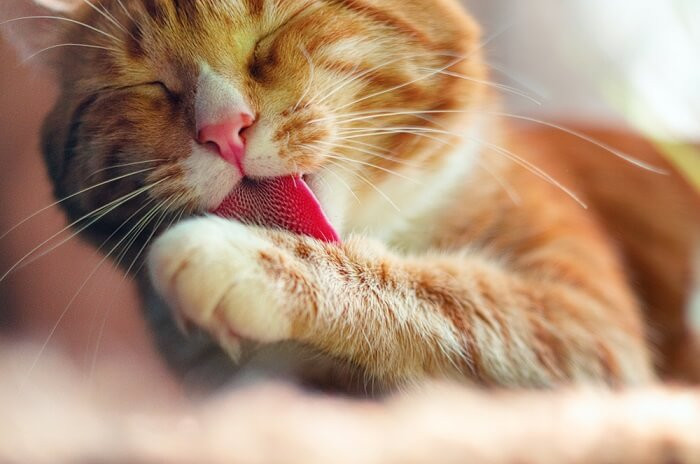 Cat Licking Wound – Potential Neosporin Reaction
Cat Licking Wound – Potential Neosporin Reaction
If you’ve applied Neosporin to your cat, it’s crucial to monitor them closely for any signs of adverse reactions. Reactions can be categorized as topical or systemic (due to ingestion).
Topical Reaction Signs:
- Skin Redness: The area where Neosporin was applied may become visibly red and inflamed.
- Swelling: Localized swelling around the application site.
- Itching and Irritation: Your cat may exhibit increased scratching, rubbing, or licking at the treated area.
- Excessive Grooming: Focusing grooming intensely on the area where the ointment was applied.
Systemic Reaction Signs (Ingestion):
- Vomiting: This can range from a single episode to repeated vomiting.
- Diarrhea: Loose or watery stools.
- Loss of Appetite: Refusal to eat or decreased interest in food.
- Lethargy or Weakness: Unusual tiredness or lack of energy.
- Difficulty Breathing: Rapid or labored breathing, wheezing, or coughing.
- Pale Gums: Gums that are pale or white instead of healthy pink.
- Collapse: In severe anaphylactic reactions, a cat may suddenly collapse.
What to Do If You Suspect a Reaction:
- Remove the Neosporin: If you notice any signs of a topical reaction shortly after application, gently wash off the Neosporin with a mild, pet-safe shampoo and lukewarm water.
- Monitor Closely: Keep a close eye on your cat for any developing symptoms, both topical and systemic.
- Contact Your Veterinarian: If your cat exhibits any systemic signs, or if topical reactions persist or worsen after washing, contact your veterinarian immediately. Especially concerning signs like vomiting, diarrhea, lethargy, or breathing difficulties warrant urgent veterinary attention.
Safer Alternatives to Neosporin for Cat Wound Care
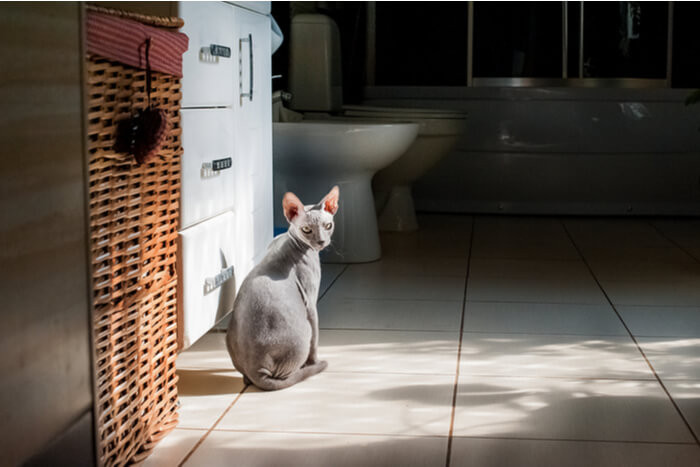 Alternatives to Neosporin for Cats – Safe Wound Care
Alternatives to Neosporin for Cats – Safe Wound Care
Given the risks associated with Neosporin, safer and more effective alternatives exist for treating minor wounds in cats. The cornerstone of initial wound care for cats involves gentle cleaning and creating an environment conducive to natural healing.
1. Gentle Cleaning with Soap and Water or Saline Solution:
- For minor cuts, scrapes, or abrasions, the first step is to gently clean the wound.
- Use mild, unscented soap and water, or a sterile saline solution to flush away debris and contaminants.
- Avoid harsh antiseptics like hydrogen peroxide or rubbing alcohol, as these can damage tissue and delay healing.
2. Keeping the Wound Clean and Dry:
- After cleaning, gently pat the area dry with a clean cloth or allow it to air dry.
- Prevent your cat from further irritating the wound by using an Elizabethan collar (cone) if necessary to stop licking.
3. Veterinary-Prescribed Topical or Oral Antibiotics:
- If you are concerned about infection or if the wound shows signs of infection (increased redness, swelling, pus, pain), consult your veterinarian.
- Veterinarians can prescribe cat-safe topical antibiotic ointments or, more effectively, oral antibiotics that are specifically formulated for feline use and address potential systemic infections.
- Oral antibiotics are often preferred for cats because they bypass the issue of the cat licking off topical medications and provide systemic treatment.
4. Silver Sulfadiazine Cream:
- In some cases, veterinarians may recommend silver sulfadiazine cream. This is a topical antimicrobial medication that is generally considered safer for cats than Neosporin, although it should still be used under veterinary guidance.
When to See a Veterinarian:
It’s always best to err on the side of caution when it comes to your cat’s health. Seek veterinary care for any wound that is:
- Deep or bleeding profusely
- Shows signs of infection (pus, increased redness, swelling, pain)
- Caused by an animal bite
- Not healing within a few days
Your veterinarian can properly assess the wound, determine if antibiotics are necessary, and recommend the safest and most effective treatment plan for your feline companion.
Conclusion: Prioritizing Cat-Safe Wound Care
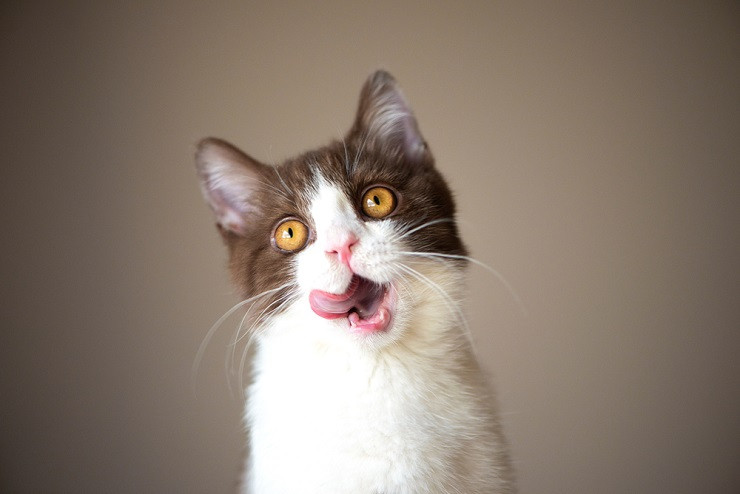 Brown and White Cat Portrait – Healthy Cat
Brown and White Cat Portrait – Healthy Cat
While Neosporin is a common household remedy for humans, it is not the ideal solution for treating wounds in cats. The risks associated with potential allergic reactions, especially upon ingestion during grooming, outweigh the limited benefits of topical application.
For minor feline wounds, gentle cleaning with mild soap and water is often sufficient. If there are concerns about infection, or if the wound is more serious, consulting with your veterinarian is crucial. Veterinarians can provide safe and effective alternatives, such as cat-specific antibiotics, ensuring your cat receives the best possible care without unnecessary risks.
Choosing cat-safe wound care options and seeking professional veterinary advice when needed is the most responsible approach to keeping your feline friends healthy and happy.
Frequently Asked Questions About Neosporin and Cats
What is a safe antibiotic ointment for cats?
Unlike for dogs, many common topical antibiotic ointments, including Neosporin, pose risks for cats due to potential allergic reactions to ingredients like neomycin and polymyxin B. It’s generally safer to avoid over-the-counter antibiotic ointments for cats unless specifically directed by your veterinarian. For infections, veterinarians often prescribe oral antibiotics that are formulated for cats and are less likely to cause adverse reactions.
What can I put on my cat’s wound instead of Neosporin?
For minor wounds, cleaning the area gently with mild soap and water or a sterile saline solution is usually the best first step. Avoid applying topical ointments unless advised by your vet, as these can encourage licking and potential ingestion. Monitor the wound for signs of infection, and if you are concerned, consult your veterinarian for appropriate treatment, which might include vet-prescribed medications.
Is Neosporin toxic to cats?
Neosporin is not inherently toxic in small amounts, but it poses risks to cats due to potential allergic reactions to its components, especially neomycin and polymyxin B. Ingestion through grooming can increase the risk of both gastrointestinal upset and, in rare cases, severe anaphylactic reactions, which can be life-threatening. Therefore, Neosporin is generally not recommended for cats, and safer alternatives should be considered.

